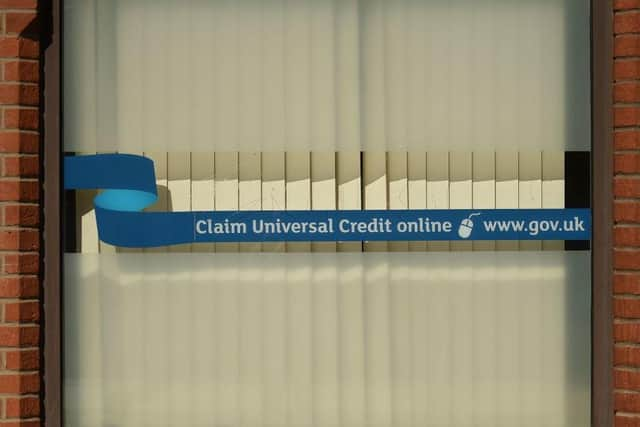Young people in Northampton 'forced to choose between paying rent and buying food because of Universal Credit'
and live on Freeview channel 276
Universal Credit does not cover the average rent for many young people in Northampton, according to a youth homelessness charity.
The housing allowance for under-25s in a room or a one-bedroom home is less than the average monthly rent for both types of property in the town, research by Centrepoint found.
Advertisement
Hide AdAdvertisement
Hide AdBalbir Chatrik, from the charity, said: “Universal Credit is forcing too many young people to choose between paying rent and food.


"These are impossible choices to make at the best of times but, in the middle of an unprecedented health and economic emergency, it’s clear the rules need urgent change."
In March, the Chancellor announced an increase in Universal Credit to cover at least 30 per cent of the cheapest local rental costs in response to the coronavirus pandemic/.
Centrepoint's analysis, which compares rental market data with the new local housing allowance (LHA) rate, found under-25s will not get enough to cover their rent in all but four local authorities in England.
Advertisement
Hide AdAdvertisement
Hide AdIn Northampton, there is a £72 shortfall between the average monthly rent for a room in a shared home and the LHA and a £42 shortfall for one-bedroom homes.
Ms Chatrik said: “The government won plaudits for its early work with rough sleepers and help with renters.
"That will count for nothing if it now fails to follow through and leaves some of our most vulnerable young people facing destitution and homelessness.”
LHA is the rate used to calculate the amount of Universal Credit claimants receive to help with renting costs in the private sector and is split into different rates, depending on the claimant’s house type.
Advertisement
Hide AdAdvertisement
Hide AdSome vulnerable claimants are able to access the higher 'one bedroom rate' but most under-35s will receive the lowest Shared Accommodation Rate because it is assumed they are able to return home or receive financial help from parents, according to Centrepoint.
The government already recognises this would not be possible for some vulnerable groups - such as care leavers aged 18 to 21 and homelessness hostel leavers older than 25 - and allows them to claim the higher one-bed rate.
A Department for Work and Pensions spokesperson said: “We currently spend over £95 billion a year on working age benefits and remain committed to supporting the most vulnerable in society.
“In response to the Covid-19 emergency we have increased LHA rates, including the shared accommodation element, benefiting over one million households by £600 a year on average.
"In addition, £180 million of discretionary housing payments are available with those struggling financially able to apply regardless of age and we’ve raised Universal Credit by £1,040 a year.”
Comment Guidelines
National World encourages reader discussion on our stories. User feedback, insights and back-and-forth exchanges add a rich layer of context to reporting. Please review our Community Guidelines before commenting.